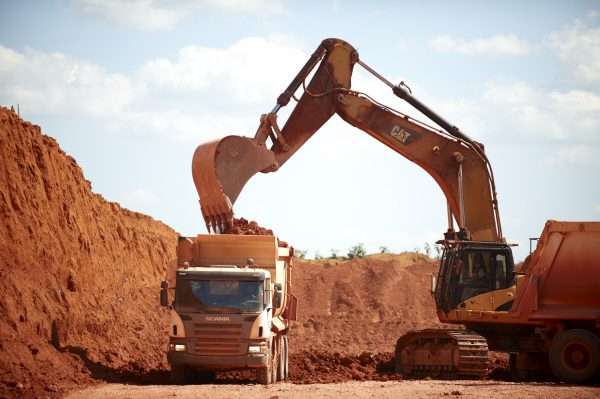Mining: The process
Around 8% of the earth’s crust is aluminium, and no more abundant metal exists on the planet.
However, aluminium is never found in a pure state in nature. Instead, aluminium oxide compounds (alumina) are most often found in the sedimentary rock bauxite, which is the primary ore of aluminium. So, before it can be refined into aluminium, it must be mined and then extracted from bauxite.
Often found near the surface, bauxite is generally extracted through surface mining. First, the land is cleared of trees and vegetation, while seeds and saplings are collected for regenerating the site post-mining in line with sustainability objectives. The bauxite layer is found underneath the topsoil – which is removed and stored – and the secondary layer, known as the overburden.
The extraction process can differ depending on the physical characteristics of the bauxite. This is done through a combination of drilling, blasting, or bulldozing. Next, the bauxite is hauled, as is, or crushed and washed prior to stockpiling and onward transport. Not all mines use wash plants, but for those which do the good news is that bauxite doesn’t need a lot of complex processing. A straightforward beneficiation process removes clay, and then the journey takes the bauxite to alumina refineries, which can be located close to the mines or far overseas.
While bauxite is mined globally, approximately 90% of the reserves are in tropical and subtropical regions. In West Africa, Australia, South America, and India, large blanket deposits cover extensive areas. Bauxite is also found in smaller pockets in the Caribbean, China, Russia and southern Europe, either as interlayered or karstic deposits.
1821
Bauxite discovered near Les Beaux in southern France by Pierre Berthier
1854
Sainte-Claire Deville discovers a method to separate kilogram amounts of aluminium from its oxide, alumina
1886
Charles Martin Hall and Paul Héroult independently develop an electrolysis process for making aluminium from alumina
1887
Karl Josef Bayer patents his process for extracting alumina from bauxite
1891
Alfred Nobel commissions the first passenger boat, Le Migron, with an aluminium hull
1901
Two years after presenting the first sports car with an aluminium body, Karl Benz presents the first car engine using aluminium parts
1903
The Wright brothers use a lightweight aluminium engine block in the Wright Flyer – the world’s first sustained flight
1910
Aluminium foil replaces tin foil for the first time
1967
Coca-Cola starts producing aluminium cans
